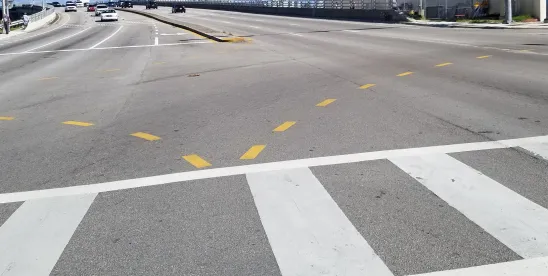Whether your favorite commuting option is driving, riding the bus, or cycling, you will need to walk at some point. As such, learning pedestrian safety is an important aspect of staying safe, especially when you have kids.
Younger kids will depend on your supervision when on the road, but as they grow older and start venturing out, you may lose control of where they go. You want to ensure your children have basic safety tips to keep them safe when you are not around.
This guide delves into pedestrian safety for kids and can help you with preparing your kids for safety.
Start Early
Your kids should not be on the road without supervision until they are 11 to 12 years old. But you should not wait that long to start safety training. The earlier you can have them understanding the dangers of the road, the better.
Training is not about allowing them onto the road but ensuring they have some basic understanding of safety that can help them in case you are not around. For example, they may be tempted to cross the neighborhood street to get a ball. It is important you have taught them to look both ways before crossing the street well before a situation like this occurs.
Your approach to safety training will depend on the child's age, so ensure you only give as much information as they can retain at the time.
Walking Safely
Pedestrians do not belong on the road, so encourage your kids to always walk on the sidewalks and at the furthest end of the sidewalk. Not all roads will have a sidewalk, so under such circumstances, teach your child to use the furthest edge of the road facing oncoming traffic.
The best place to cross the road is at crosswalks, but even then, they will still need to look both ways to ensure there isn't any oncoming traffic and that nearby vehicles have yielded right of way. Having the right of way doesn't always mean that the driver will yield to it. Be sure any cars in the road are stopped, and you have eye contact before beginning to cross.
If there are no crosswalks, teach your child to always use an area with the best view of traffic and ensure the road clears up before crossing.
Avoid Distractions
Distractions are a leading cause of pedestrian accidents. They can come from anywhere, but the most common distraction is electronic gadgets. Electronic gadgets do not belong on the road unless you are a passenger.
Other distractions can occur on the road, such as being lost in thought or another activity. While you can't control everything that comes to mind or happens near you, your safety should come first. Try to have as much situational awareness as possible when on the road, as it can make a huge difference in safety. Kids are more vulnerable to distractions, so it is important they have close supervision.
Lead by Example
A child's brain is impressionable, learning more through observation than explanation. Ensure you lead by example when walking with your children. Always put down the distractions and be aware of your surroundings.
You can also explain your actions out loud and why they are important. Do the same when you have them as passengers in your vehicle. Let them know you obey traffic rules like yielding the right of way to pedestrians, stopping at red lights, and so on.




 />i
/>i

